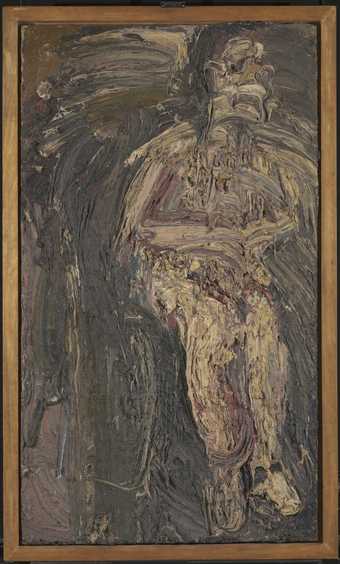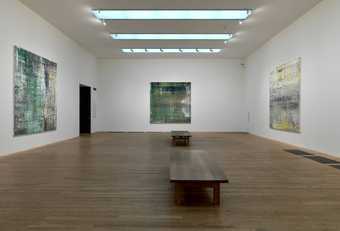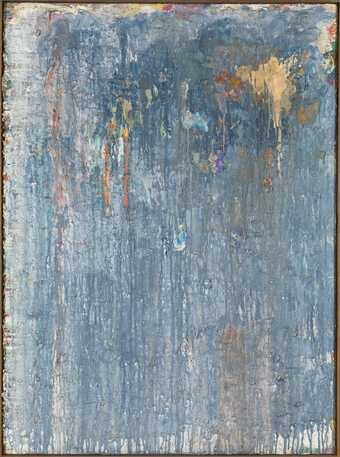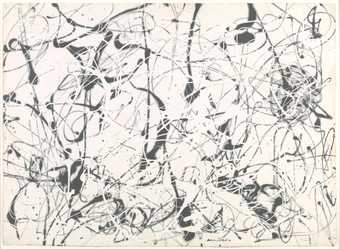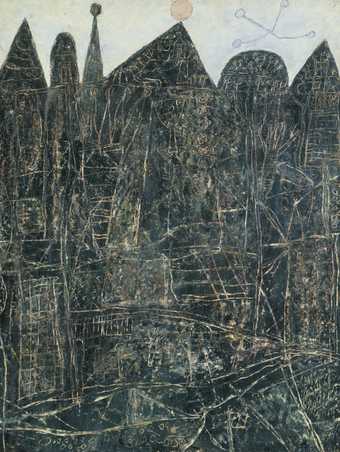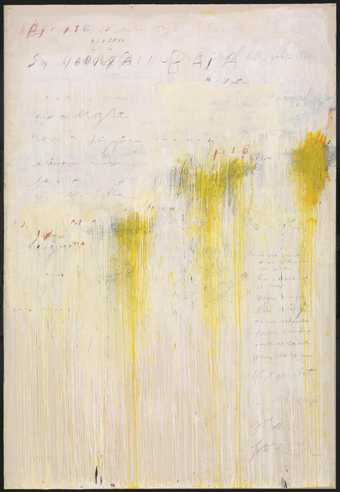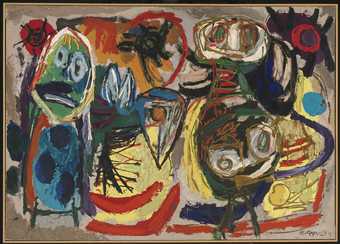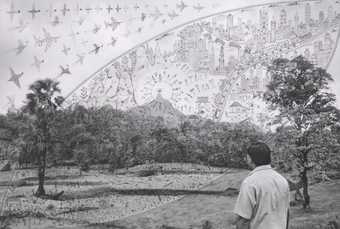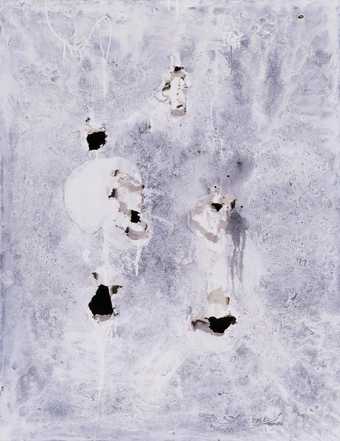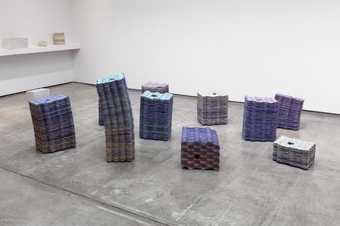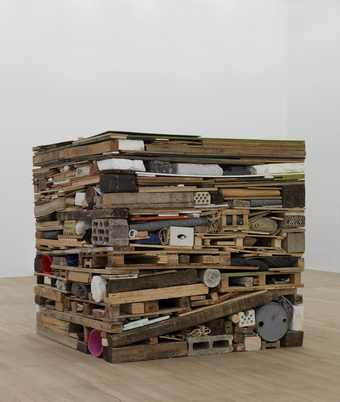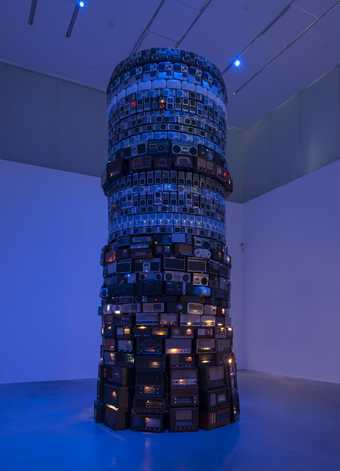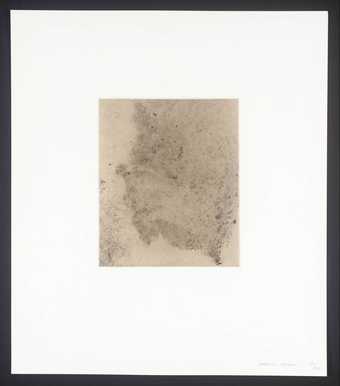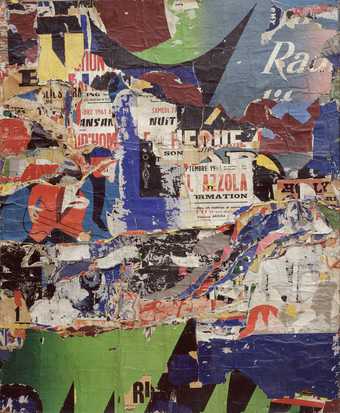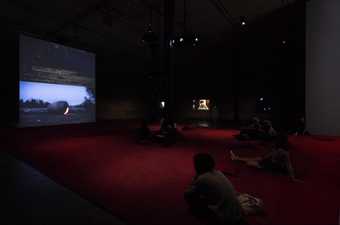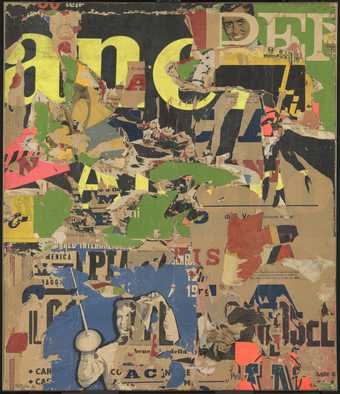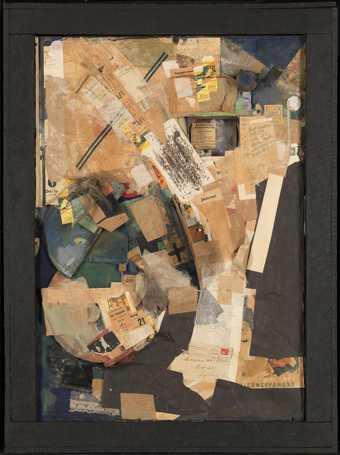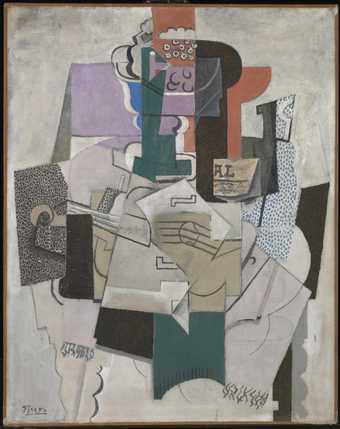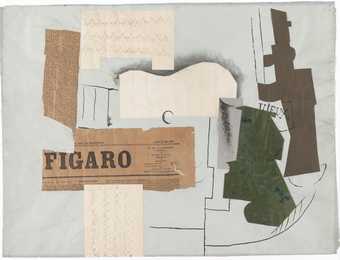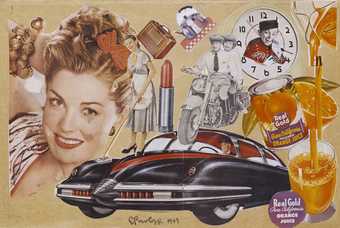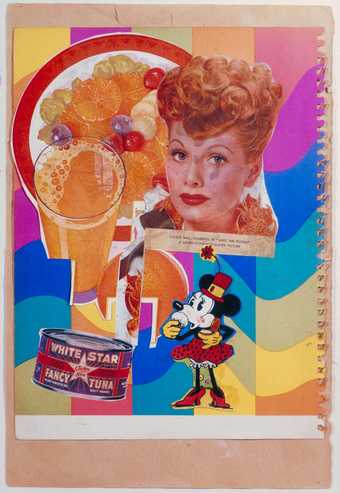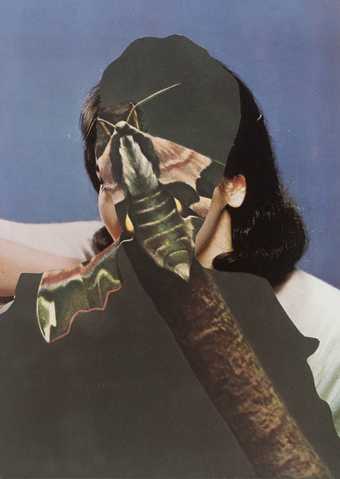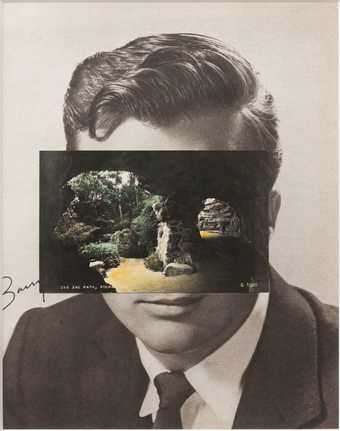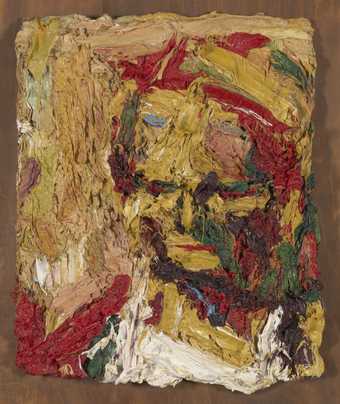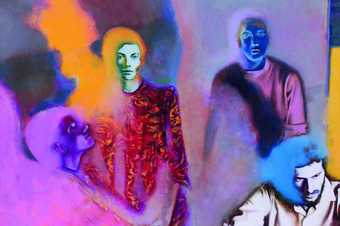Hidden layers
The traditional technique of oil painting often uses a series of layers to build up an image even when the final painting looks completely smooth and finished.
John Singer Sargent worked on his painting Carnation, Lily, Lily, Rose for over a year, and friends watching him paint it every evening for a few short minutes when the dusky light was just right, recalled that many mornings it would look as if he’d scraped the canvas down, trying to find exactly the right luminous feeling for the composition.
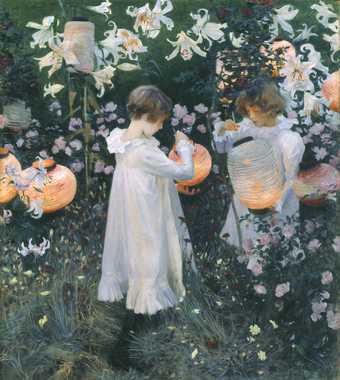
John Singer Sargent
Carnation, Lily, Lily, Rose
(1885–6)
Tate
Painting in acrylics often uses a similar technique, though the layers dry much more quickly. Laying down a base can make colours stand out, while a final layer using bold dark outlines can really bring dynamism and movement to flat colours. Wassily Kandinsky’s Cossacks (1910–1) uses subtle layers of paint to bring his abstracted scene alive.
Visible Layers
Rather than being a technique, however, sometimes layers can be the subject of a painting themselves.

Maria Lalic
History Painting 42 C20th. Winsor Yellow
(1995)
Tate
British artist Maria Lalic made over fifty paintings in her series History Paintings. The paintings initially look like monochromes (paintings of one single colour), but a closer look reveals the paint layers beneath the surface. The edges of the canvases are left unpainted, so the build up of layers can be seen from the side. She made each one in a similar way, priming with acrylic gesso, then adding multiple layers of thin glaze paint made of different pigments to build up the final colour. She always brushed from left to right and kept the canvas horizontal. The paintings are named for the pigments she used to create each canvas.
The paints used in this series all relate to a paint chart Lalic found in 1994, which was printed by paint manufacturers Winsor and Newton. They had made categories of colours based on when different pigments were developed. They divided them into six eras – ‘Cave’, ‘Egyptian’, ‘Greek’, ‘Italian’, ‘C18/19th’ and ‘C20th’. The ‘Cave’ era had only four colours in the chart, while more and more colours were added as time passed, and technology for creating pigments improved. Lalic painted each colour on the chart, mixing and layering up the pigments to create the final pieces.
‘History painting’ usually refers to a type of large-scale European painting, often of a scene from the Bible, from mythology, or a historical event. However, Lalic’s work, instead of representing history through painting, actually tries to present a history of painting itself, through a chronology of pigments.
‘If we look at the colours that were available to someone in the cave era, say ... There are four coloured pigments from that period and they’re so resonant with what that life was situated around – fire and earth, carbon black from fire, and from the earth yellow, red and chalk. It says so much about a particular culture and civilisation ... I think I’m simply excited by recognising a time and place through colour’ (Maria Lalic in Fortnum 2007, p.34).
Thick paint layers
Other painters have used paint in thick layers to build up their works. Using a palette knife to smear the paint on, dripping paint from a stick or using other tools to scrape it off or scratch in to it can create a range of effects and feelings. Artists can create an atmosphere related to the natural world, recall the softness of flesh or simply revel in the qualities of glossy dripping paint.

